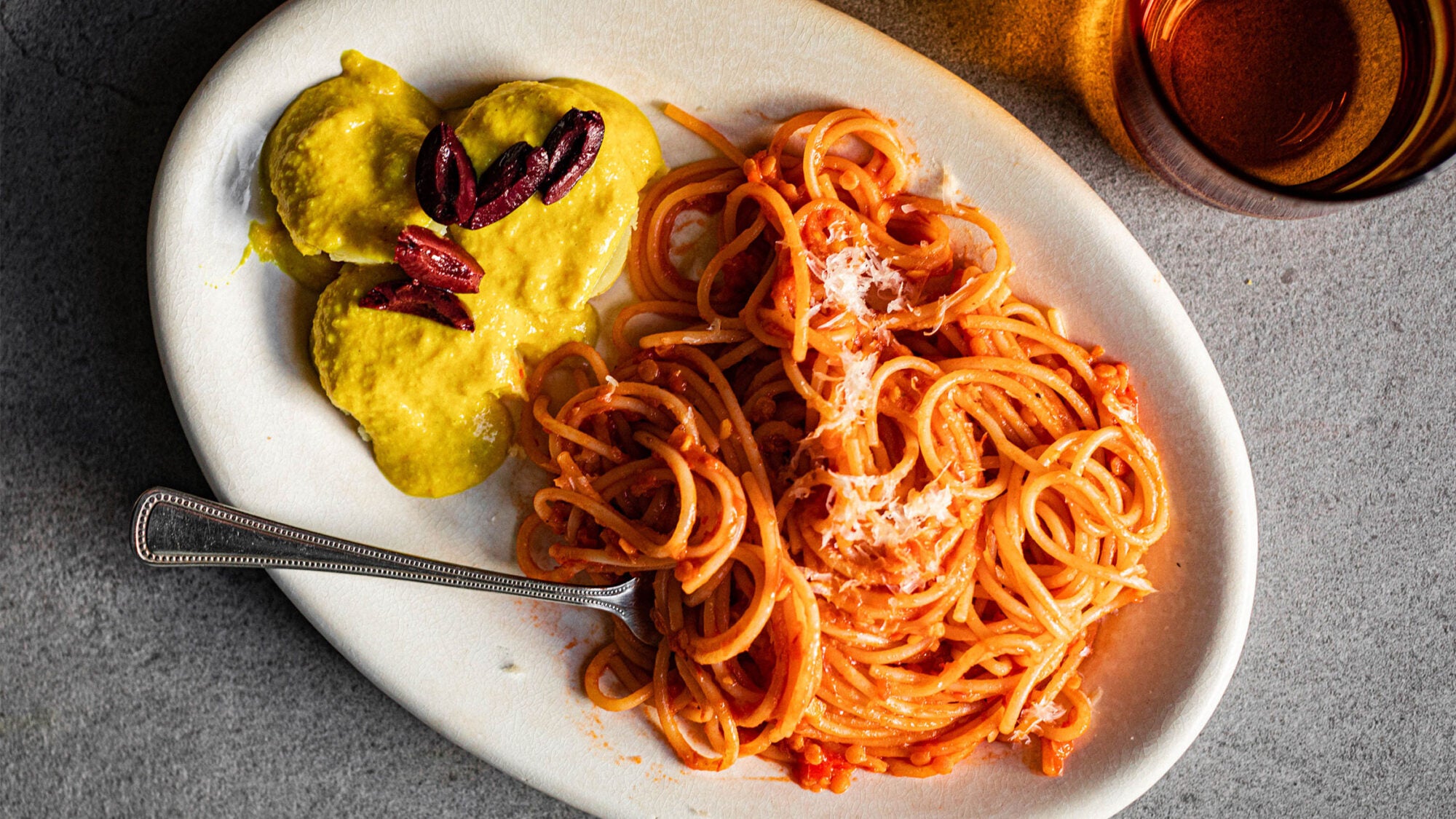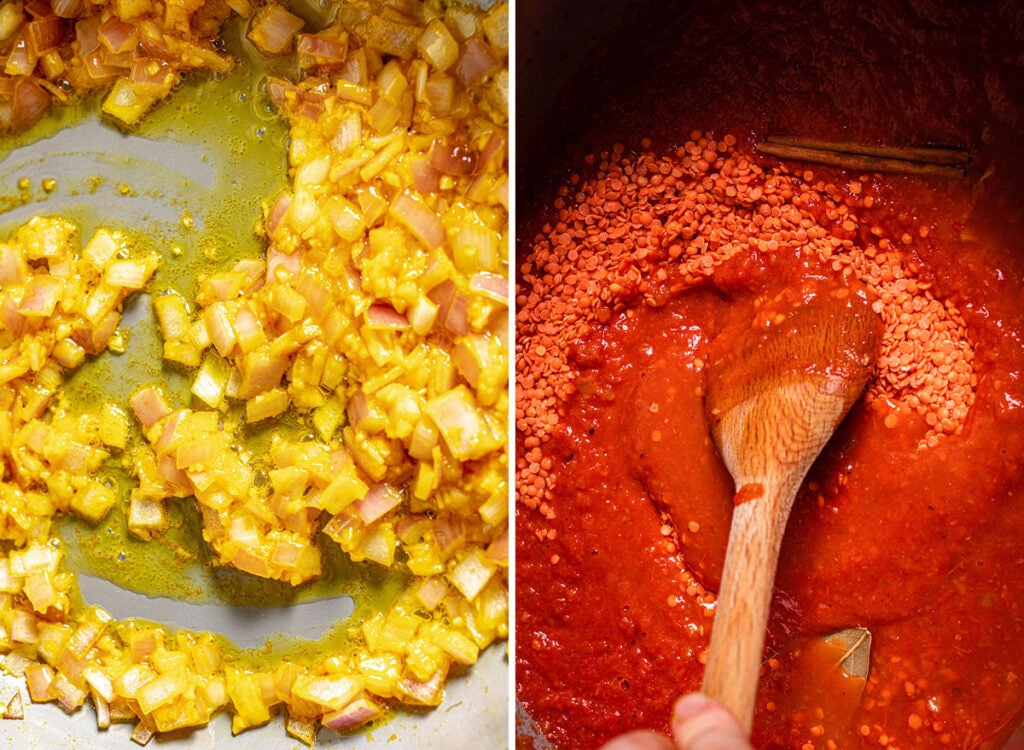
The iconic combinado of spaghetti with red sauce alongside cheesy potatoes sums up Peru’s Italian and Andean roots in one plate.
As much as we’ve been led to believe that chicken soup will “heal the soul” for most people, comfort food is its own irrational, illogical, and totally subjective category. In Don’t Call It Comfort Food, a new TASTE essay series, writers share the recipes (and not-recipes) that define comfort for them.
I’ve been an immigrant most of my life, but everywhere I’ve lived, I have sought solace by cooking the creole food of my birthplace, Lima, Peru. One of the most comforting constants has been tallarines rojos with papa a la huancaína—a unique combination of spaghetti with tomato sauce and potatoes bathed in a spicy cheese sauce that my grandmother and mother prepared for family beach picnics and community potlucks in Lima when I was a child. Large plates of this combinado made everyone joyful and replete, proof positive of the Latinx saying, “barriga llena, corazón contento.” Full belly, happy heart.
Combinados bring together two or more dishes representing Peru’s multicultural heritage on one plate. Lima’s seafood houses combine ceviche with fried calamari, while Chinese-Peruvian restaurants serve fried rice with stir-fried noodles. But the carb-on-carb combinado of tallarines rojos and papa a la huancaína is a unique mélange of Italian and Andean cuisines, a culinary contrast of urban and mountain cultures. It connects me not just to my childhood, but also to my mother’s youth, when my grandmother prepared this combinado for their family beach picnics during summer weekends in Lima in the 1940s.
The carb-on-carb combinado of tallarines rojos and papa a la huancaína is a unique mélange of Italian and Andean cuisines, a culinary contrast of urban and mountain cultures.
To make tallarines rojos, Lima’s cooks reshaped the Bolognese sauce that 19th-century Italian immigrants introduced to Peru. They kept the onion, carrots, celery, and tomato, removed the milk and meat, and then added creole spices like cumin and bay leaves. Limeños typically top the tallarines with fried chicken. For the huancaína sauce, my Andean grandmother used a stone batán to grind ají amarillo, a native yellow hot pepper, and queso fresco for adding to milk thickened with bread or crackers. Then she poured the sauce over boiled potato rounds.

After our family moved to Canada when I was a teenager, my mother taught me to cook the combinado in the oral tradition. Wanting to be precise, I asked her to measure ingredients. “Un poquito de azúcar” (“just a little bit of sugar”) was as specific as it got with her. In the decades that followed, I moved to the United States, taught Peruvian cooking classes in California, and settled in Oregon. But after becoming vegan two years ago, I was afraid I’d lose my culinary identity by giving up the creole dishes I grew up with. As I began to re-create the combinado without animal products, I realized that its appeal was the filling carb-on-carb comfort of spaghetti and potato smothered in creamy, colorful, and spiced savory sauces. The soul of the dish was still all there, even without any poultry or dairy.
For the tallarines rojos sauce, I sauté carrot, onion, bell pepper, and celery in a large pot, much like the base of a sofrito. After adding canned crushed tomatoes and stock, I puree the softened vegetables with an immersion blender before simmering them. Then, instead of topping the dish with fried chicken, I add dry red lentils to the sauce for some added protein, adjusting for the liquid they require to cook. To build the huancaína sauce, I start with the traditional onion, garlic, and ají amarillo aderezo base, but I add turmeric to boost the color. Oat milk and coconut milk yogurt replace the dairy, while a bit of nooch enhances savoriness, and crushed saltines thicken the sauce.
After making this combinado for more than 30 years, I’ve noticed that I cook like my mother, “al ojo” (“by eye”), and no longer follow recipes. Though I’ve modified the preparation over time, the base techniques are all there, and the comfort this combinado provides is the same. Now, no matter where I live, I return home when I cook these dishes.